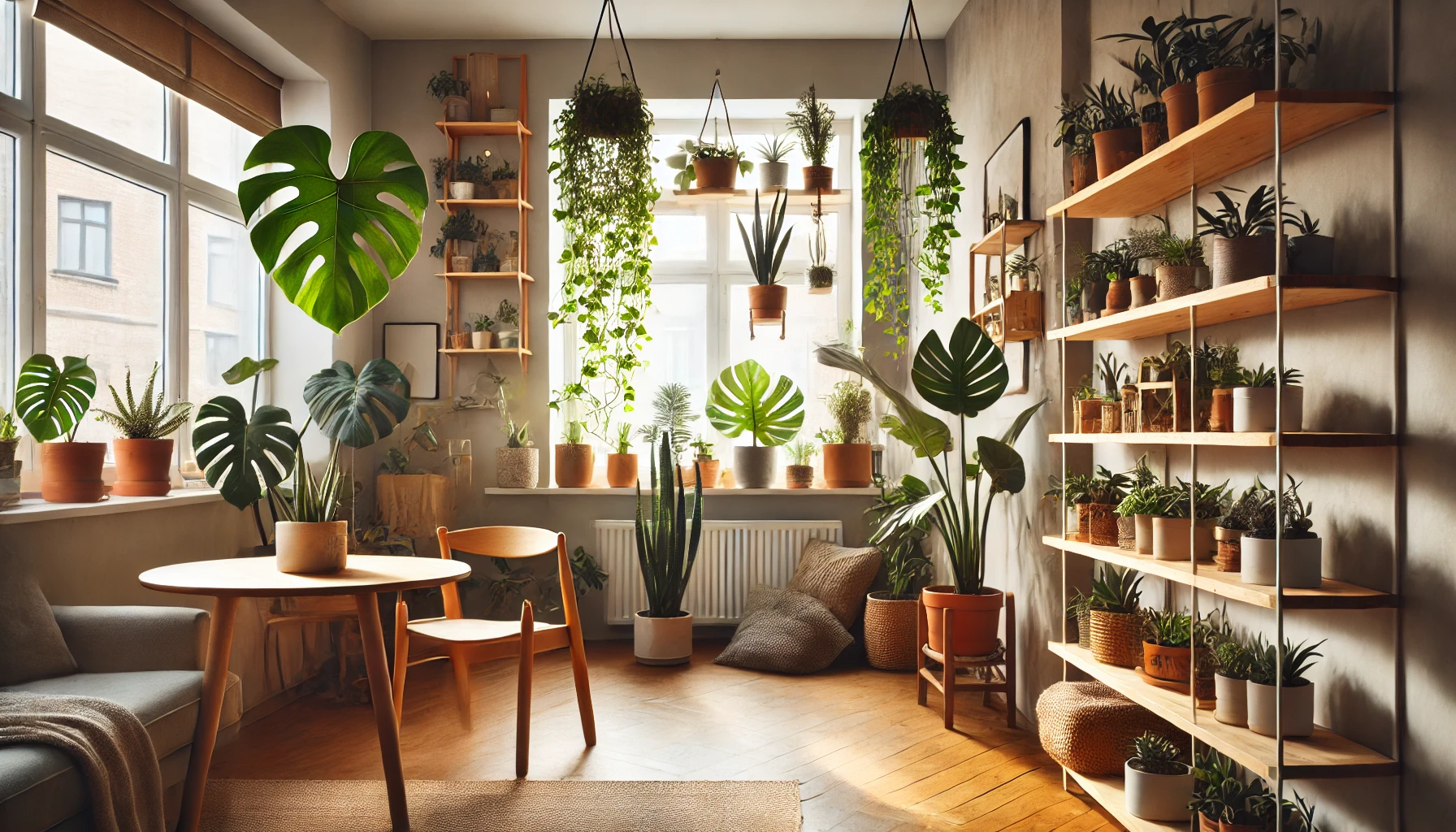Plants cannot talk, but with a little light and water, they know how to say ‘thank you’ with green leaves and colourful flowers.
Indoor plants, care through the ages
Since ancient times, plants have been brought into homes not only for their beauty, but also for the benefits they provide. In ancient Egypt, pharaohs decorated palaces with plants and flowers to create more pleasant environments.
Inancient Rome, herbs were cultivated for culinary and medicinal purposes, i.e. to flavour food, prepare herbal teas and treat ailments.
Indoor plants require special care, however, as they live in artificial environments. For example, ficus and citrus trees need a lot of direct light and are ideal near south or west-facing windows. Ferns and calathea on the other hand prefer filtered light and humid environments, making them perfect for north-facing rooms.
Watering is crucial for plant health, and each species has different needs. Using pots with drainage holes and well-drained soil helps avoid water stagnation, and it is important to check soil moisture before watering.
Fertilisation is another essential element: balanced fertilisers are ideal during the growing season, while in winter fertilisation should be reduced or suspended. Nitrogen promotes leaf growth, phosphorus is useful for roots and flowering, while potassium improves resistance and flower quality.
Benefits of indoor plants
Houseplants’ not only decorate, they purify the air by absorbing toxins such as formaldehyde and benzene.
Through photosynthesis, they release oxygen during the day. Some, such as Sansevieria and Aloe Vera, continue to produce oxygen even at night.
Transpiration releases water vapour from the leaves, stabilising air humidity, useful in dry rooms. Plants such as ferns, Pothos and Spatiphyllum increase humidity, ideal for heated rooms or air-conditioned offices.
The presence of flora also improves psychological well-being, increasing concentration, reducing stress, improving mood and lowering blood pressure.
Fragrances such as lavender and rosemary have calming effects, and it is known that working in an environment with plants improves concentration and enhances productivity, improving memory and encouraging creative solutions.
Do you have one in your office?
Common errors in care
Yellowed or drooping leaves often indicate problems in plant care.
The main causes includeover-watering, which causes root rot, lack of light that causes the lower leaves to turn yellow, and the presence of pests such as aphids, mealybugs and mites that damage the leaves.
Lack of essential nutrients, sudden changes in temperature or draughts also stress the plants causing yellowing and leaf fall.
Indoor plants, just like outdoor plants, are vulnerable to pests and diseases caused by aphids, mealybugs and moulds.
It is important to remove pests in good time and to use fungicide treatments (also home-made such as garlic) against diseases to maintain plant health.
Common mistakes include overwatering, choosing an inappropriate pot, positioning the plant incorrectly and not considering the specific needs of the plant.
It is therefore crucial to always check the soil moisture before watering, choose a pot with drainage holes and position the plant correctly according to its light requirements.
Taking care of house plants requires attention and knowledge, but with a little care, plants will thrive, making your home more beautiful, healthy and cosy.
Play for the planet!
